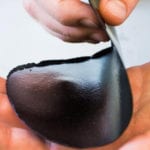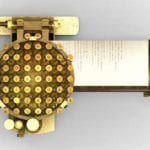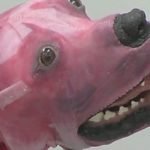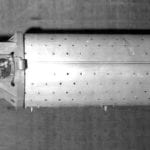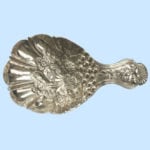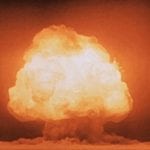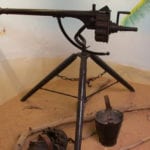 Crime
Crime  Crime
Crime  Technology
Technology 10 Hilariously Over-Engineered Solutions to Simple Problems
 Miscellaneous
Miscellaneous 10 Ironic News Stories Straight out of an Alanis Morissette Song
 Politics
Politics 10 Lesser-Known Far-Right Groups of the 21st Century
 History
History Ten Revealing Facts about Daily Domestic Life in the Old West
 Weird Stuff
Weird Stuff 10 Everyday Products Surprisingly Made by Inmates
 Movies and TV
Movies and TV 10 Actors Dragged out of Retirement for One Key Role
 Creepy
Creepy 10 Lesser-Known Shapeshifter Legends from Around the World
 Animals
Animals 10 Amazing Animal Tales from the Ancient World
 Gaming
Gaming 10 Game Characters Everyone Hated Playing
 Crime
Crime 10 Terrifying Serial Killers from Centuries Ago
 Technology
Technology 10 Hilariously Over-Engineered Solutions to Simple Problems
 Miscellaneous
Miscellaneous 10 Ironic News Stories Straight out of an Alanis Morissette Song
Who's Behind Listverse?

Jamie Frater
Head Editor
Jamie founded Listverse due to an insatiable desire to share fascinating, obscure, and bizarre facts. He has been a guest speaker on numerous national radio and television stations and is a five time published author.
More About Us Politics
Politics 10 Lesser-Known Far-Right Groups of the 21st Century
 History
History Ten Revealing Facts about Daily Domestic Life in the Old West
 Weird Stuff
Weird Stuff 10 Everyday Products Surprisingly Made by Inmates
 Movies and TV
Movies and TV 10 Actors Dragged out of Retirement for One Key Role
 Creepy
Creepy 10 Lesser-Known Shapeshifter Legends from Around the World
 Animals
Animals 10 Amazing Animal Tales from the Ancient World
 Gaming
Gaming 10 Game Characters Everyone Hated Playing
Top 10 Amazing Inventions Of The 1900s
With many historical inventions, there are often disagreements about the identity of the creator, the origin of the idea, and the time when the product was first used. In this list, we’ll look at 10 amazing inventions from the 1900s.
Although some of their backstories are still unclear, we do know the fascinating histories of others. More importantly, each of these inventions has become as commonplace today, in one form or another, as ancient inventions, like paper and concrete, have.
10 Life-Changing Inventions That Were Discovered By Accident
10 Science Fiction Films
In 1902, Le Voyage dans la Lune (A Trip to the Moon) became the first science fiction story shown on-screen. This short, silent film was created by the French director and stage magician Georges Melies. This man was described by Charlie Chaplin as an “alchemist of light.” D.W. Griffiths, an American movie director, stated: “I owe him everything.”[1]
The film focuses on a group of astronomers who travel to the Moon. From the Earth to the Moon (1865) by Jules Verne and The First Men in the Moon (1901) by H.G. Wells were Melies’s main inspirations. The most iconic scene shows the man in the Moon with a bullet-shaped spacecraft embedded in his eye.
After creating over 500 short films, Melies was inducted into the Science Fiction Hall of Fame in 2015.
9 Teddy Bears
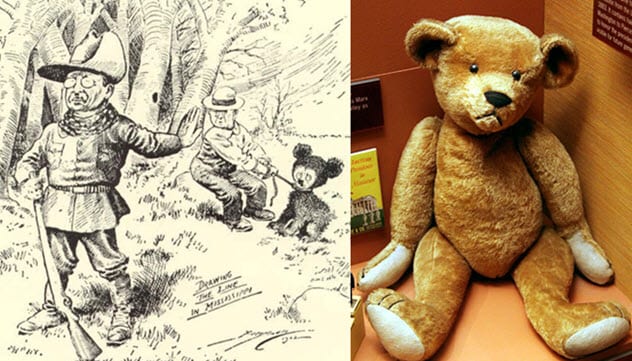
In 1902, Theodore “Teddy” Roosevelt took part in a bear hunt in Mississippi. As he hadn’t found a single bear, some men in the hunting party hit one over the head with a rifle and tied it to a tree. When a bugle was blown, this was the sign for Roosevelt to come over and shoot the poor animal. But Roosevelt felt this was unfair and walked away.[2]
Clifford Berryman, a cartoonist for The Washington Post, drew a picture of Roosevelt walking away from the bear. This portrayed Roosevelt as a kind, animal-loving gentleman, which worked well for a politician who wanted the people on his side.
At this time, Morris Michtom, a candy shop owner in New York, decided to name his signature stuffed bear after Roosevelt, who granted him permission to do so. These new toy bears were so popular that Michtom went on to found the Ideal Novelty and Toy Company in 1907.
8 Paper Clips
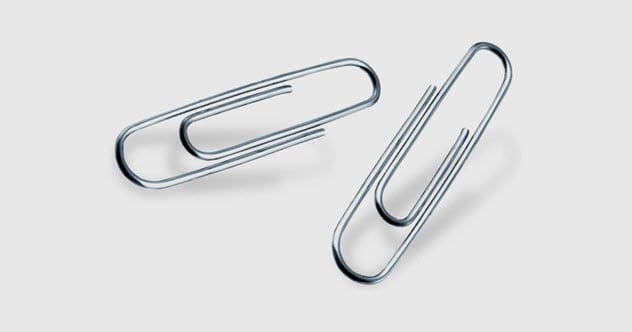
Although references to fastening sheets of paper together date back to the 13th century, this was first done by putting a ribbon through a hole at the top corner of the sheets. It was centuries before the double oval shape we all know today was designed by Gem Manufacturing Ltd. in England in the late 1800s.
This style is still known as the “Gem” clip, although it was never patented. It also has the shape most commonly used today. (The Norwegian inventor Johan Vaaler, often erroneously credited as the creator of the paper clip, received a US patent for an inferior design in 1901.)
In 1958, a survey was taken to discover how else paper clips are used. Findings included toothpicks, fingernail and ear cleaners, bra fasteners, game markers, and childish weapons.
To honor Vaaler, a giant paper clip was erected in Oslo in 1989. It weighed 602 kilograms (1,327 lb) and was 7 meters (23 ft) high. However, it is the Gem clip, not the product patented by Vaaler.[3]
7 Mother’s Day

In 1908, the first Mother’s Day took place in the US. This was set up by Anna Jarvis. She held a memorial service in St. Andrew’s Methodist Church in Grafton, West Virginia, for her mother, who had died in 1905.[4]
Anna Jarvis was dedicated to making Mother’s Day a public holiday. During the US Civil War, she even formed a Mother’s Day Club, which focused on the health problems of wounded soldiers.
In 1914, President Woodrow Wilson finally declared the second Sunday in May as “Mother’s Day” and made it a national holiday. Flowers and Simnel cake were two of the traditional presents. Wildflowers were usually picked up in country lanes by workers on their way home. These were much different than the impressive bouquets that can be easily purchased today.
A Google analysis of search data from 2004 to 2015 determined the most popular Mother’s Day gifts in each state. Although roses were the most popular in Indiana, iPads were the most common in Kentucky. Surprisingly, bird feeders were the favorite gift in New Hampshire.
6 Cellophane
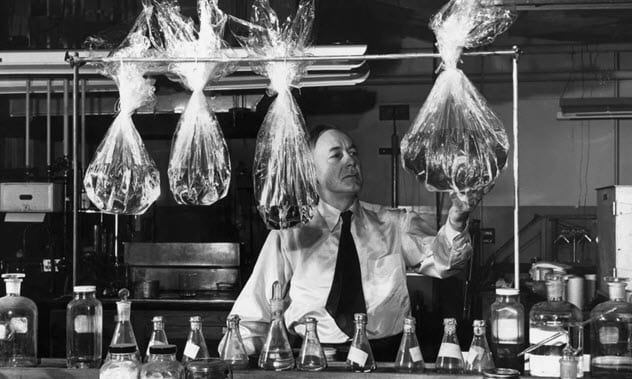
In 1900, Swiss chemist Jacques E. Brandenberger was in a restaurant when he saw another customer spill wine all over a tablecloth. The waiter had to soak up the mess and take the tablecloth away. Brandenberger began to wonder if a material could be made to repel the wine instead of letting it sink in.
First, he tried spraying a waterproof coating on cloth. But it was too stiff and easily peeled off. He continued to experiment and invented cellophane in 1908. The name is a combination of cellulose and diaphane (“transparent”).
By 1912, Brandenberger had created a machine capable of large-scale cellophane production. In 1913, La Cellophane SA was set up in France, but the outbreak of World War I made development quite a slow process. When he died in 1954, Brandenberger was estimated to be worth $10 million.[5]
10 Great Inventions We Will Probably Never See
5 ‘Crayola’ Crayons
In 1903, cousins Edwin Binney and C. Harold Smith invented the first brand of children’s crayons. “Crayola” comes from the words craie (“chalk”) and oleaginous (“oily”).
Although the two men had already created a wax crayon for marking crates and barrels, it included the toxic chemical “carbon black,” which was also used to make shoe polish and color car tires. Obviously, these crayons weren’t suitable for children. After making slate pencils that were used in schools from 1900, they went on to design the first colored crayons for children.[6]
In 1958, the Crayola collection containing 64 different colors and a built-in sharpener was first produced. While this box is still available today, it’s now possible to purchase an even bigger one with 120 different colors.
4 Vacuum Cleaners
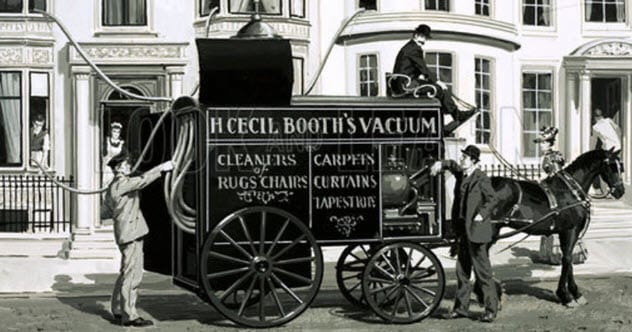
British engineer Hubert Cecil Booth is responsible for creating one of the first powered vacuum cleaners. Before then, machines blew out air to try to push the debris away instead of removing it completely.
Booth’s experiments included putting a handkerchief over his mouth and sucking in air to see how much dust was collected. This encouraged him to work on his first design, known as the “Puffing Billy.” Due to the size of the engine used for this invention, it was kept outside and pulled around by horses.[7]
In 1903, Booth set up the British Vacuum Cleaner Company. The vacuum manufactured by this company was a lot smaller, but it made a lot of noise. Nevertheless, it was a popular invention among the upper class. Even the British royal family owned one.
3 Windshield Wipers

Although the first steam-powered automobile was built in 1769 by Nicolas-Joseph Cugnot, windshield wipers weren’t invented until 1905 by Mary Anderson in New York. Although the design was effective, it had to be activated by constantly pulling a lever to keep the wiper moving up and down.
Obviously, other inventors saw room for improvement. However, there have been disagreements over who invented the first automatic windshield wiper.
Brothers William M. and Fred Folberth were the first Americans responsible for developing them, and their invention was patented in 1921. As this wiper was vacuum-powered and used air from the car’s engine manifold, the wiper’s pace tended to slow down and accelerate depending on the speed of the car. It wasn’t until the 1930s that the electric wipers we use today were invented.[8]
2 Gumball Machines
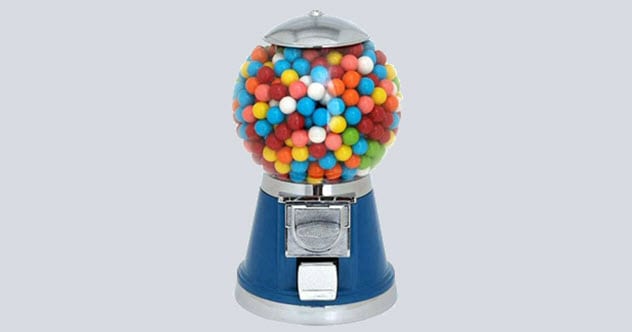
Vending machines were introduced to the US in 1888 by the Thomas Adams Gum Company. Thomas Adams is famous for inventing chewing gum, and these machines held the original flavors of Tutti Frutti, Spearmint, Blackjack, and Clove. First fitted onto subway platforms in New York, they were quite primitive. Coins were sometimes attached to string, put into the slot, and then pulled back out when the gum fell out.
The see-through machines that contain colored, candy-coated gumballs were introduced in 1907. One of the modern worries is whether these gumballs are safe to eat if they’ve been in there a long time. The International Chewing Gum Association has made it clear that they’re still “safe to chew” even though the taste and texture could change.[9]
1 Neon Signs
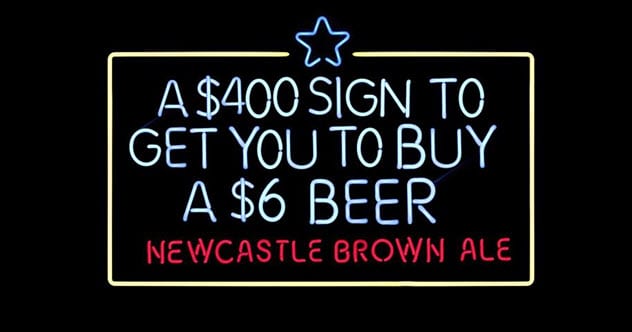
Discovered in 1898, neon gas was named after the word neos (“new”). Georges Claude was the French engineer, chemist, and inventor who first applied an electrical discharge to a tube of neon gas to create a lamp. In 1910, he displayed two 11.6-meter-long (38 ft) neon tube lamps to the people in Paris.
Initially, progress was slow. But then these tubes were made thinner and more flexible so that they could be easily twisted into different letters. Los Angeles was one of the first cities in America to embrace this invention.
In 1923, two “Packard” signs were bought by an LA auto dealership for $24,000. Policemen had to be called to clear the crowds of people who’d stopped to see this amazing creation.[10]
10 Inventions That People Really Regretted Inventing
About The Author: I have a huge interest in making a living out of freelance writing. Writing’s always been a hobby of mine, especially in the area of history.
